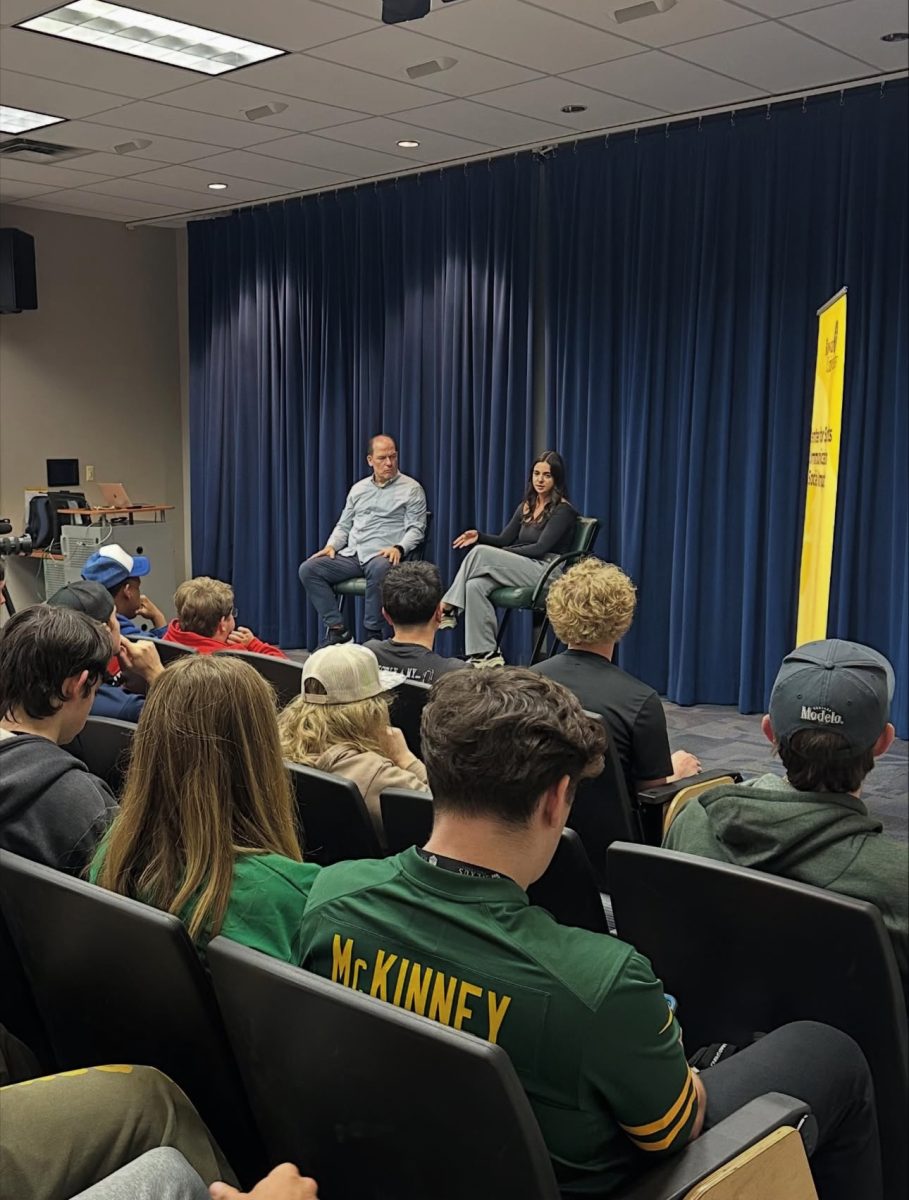Paramore’s persistence has paid off in their sixth album “This is Why,” released on Friday, Feb. 10. Despite years of inner conflict and public pressure which nearly imploded the band, the Paramore ship is still sailing, and it’s headed for the coasts of indie rock and post-punk. It’s not an unexpected arrival considering the personal and musical changes Paramore has undergone, but it is not smooth sailing either. With “This Is Why,” Paramore deploys a sound that, while lackluster at times, reflects their personal and artistic maturity.
The album starts with the title track, which was also the first single. The song stutters in with sparse guitar and bass over a busy drumbeat, then bursts into a ridiculously catchy chorus. It’s a well-constructed, tastefully artsy banger about anxiety that sets a perfect tone for the album both musically and thematically.
Next up is “The News,” which hits similar notes but is not as successful. Still, it is solid as an individual song, fretting over the 24/7 news cycle to the sound of guitar and vocals twinged with panic. While the spoken-word bridge gives listeners the gist of what’s wrong with the news — “Exploitative / Performative / Informative / And we don’t know the half of it” — its impact falls flat.
The irregular vocal flourishes throughout “This is Why” are evidence of vocalist Hayley Williams’ experience and understanding of songwriting. She mastered boisterous notes in the earlier Paramore material, but as demonstrated in her solo albums, Williams has grown to be more dynamic in her use of delicacy and release. Her voice often acts as an instrument, adding accents that lend to the album’s experimental feel.
Williams is especially adventurous on “Running Out Of Time” and “C’est Comme Ça,” the former being one of my favorites. Williams is at her best in the chorus, and her personality shines through on the second verse. The “she’s always running out of time” response is an interesting detail that turns the perspective inside out, enhancing the vulnerability which is key to the mood of the record. “C’est Comme Ça” features a frantic “na-na-na” and more spoken verses, but they work better here than on “The News.”
A strength I’ve found in Paramore albums is that there is rarely filler. Each song can stand on its own no matter where it lies in its catalog. However, “This Is Why” suffered from moments of fatigue in the middle and end, as if the song had the bones to be another Paramore great but was missing a heartbeat.
In particular, the dreamy instrumentation of “Big Man, Little Dignity,” holds back the bite of the accusatory lyrics, which don’t quite do the job themselves. Luckily, it is quickly followed by “You First,” which sees Williams confronting her desire for revenge. It’s one of the more straightforward songs on “This Is Why” and thrives in a driving, agitated space, although it’s not aggressive. “Figure 8” is a more tormented companion to “You First,” the twinkly, looping synths juxtaposing the impassioned, guitar-driven chorus.
The final three tracks ease “This Is Why” to an end. “Liar” and “Crave” highlight how comfortable the band have become in more tender songs, and Williams utilizes the softness she’s nurtured so well in her solo work. The closer “Thick Skull” is beautiful and haunting, the dark lyrics floating over a lush but restrained soundscape. Williams saves her most poetic lines for last — “I am attracted to broken people / I pick ‘em up and now my fingers are bleedin’ / And it looks like my fault / And it looks like I’m caught red-handed.”
I was one of those teenage girls who wanted to be nothing but a Hayley Williams clone. I dyed my hair all colors of the rainbow and lived by her word. This, of course, is the opposite of what Williams wanted — the song “Idle Worship” on the 2017 album “After Laughter” clearly lays out her feelings on being put on a pedestal.
“After Laughter” itself was a challenge for my 16-year-old self to comprehend, both in the sense of the bright, poppy sound and the people behind it. Paramore was now a three-piece — guitarist Taylor York continuing his devoted tenure and drummer Zac Farro returning — with Williams writing from the perspective of a recent divorce and mental health struggles which were beyond teenage angst. Williams’ hair was bleached, and mine was still her signature reddish-orange shade from 2007.
Six years later, I am no longer naive enough to expect a youthful Paramore and went into “This Is Why” with hesitant curiosity. Although “After Laughter” was Paramore’s comeback record, “This Is Why” is the band coming into their own. They settle into the themes and sound which mark their post-hiatus era with fearlessness, resulting in an album that is dynamic and sophisticated. Most of the risks pay off, and it maintains enough energy to be engaging. It beckons an attentive listener — enthralling those with an ear for indie and piquing the interest of those like me who enjoy reading between the lines.
For questions/comments about this story email [email protected] or tweet @TheWhitOnline.






































































































































































































